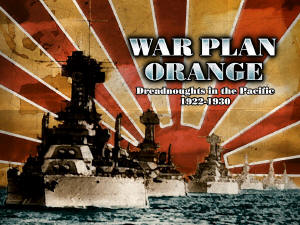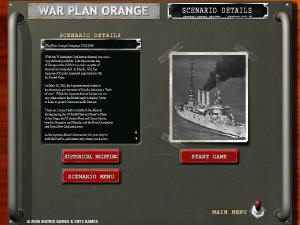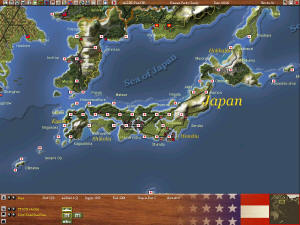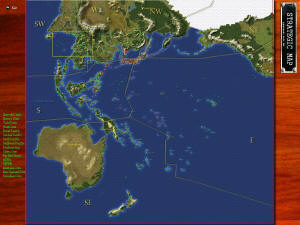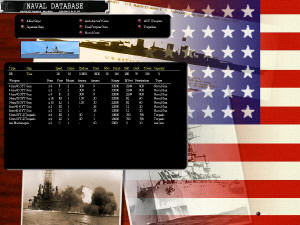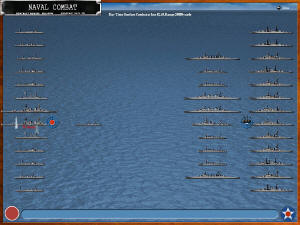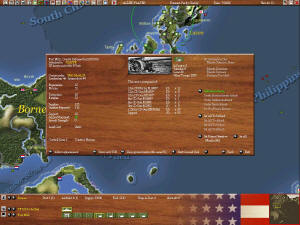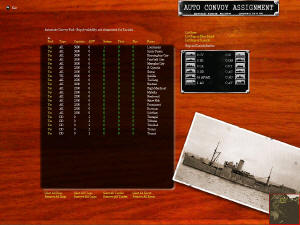|
|
||||||||
THE SUN RISES EARLY A REVIEW OF WAR PLAN ORANGE
There is a Great Pacific War that never happened, but which has been a subject of fascination for wargamers. It is the showdown in the Pacific between the United States and Japan in the 1920's and 1930's. Historically, the war took place as part of a greater Second World War, and for the United States and its Allies the Day of Infamy was 7 December 1941. The conflict was delayed for several reasons, but chief among them was a series of arms control treaties, concluded in Washington and London, that sharply limited the size of the world's navies. Traumatized by the bloodletting of World War I, politicians among the victorious Allies were determined that none of the conditions leading up to the Great War would ever happen again. Some were idealistic and silly, such as the Kellogg-Briand Treaty that attempted to outlaw war with the stroke of a pen. Others were downright counterproductive, especially the Treaty of Versailles, a curious blend of vindictiveness against Germany and Wilsonian idealism in the form of the League of Nations. Another measure was arms control. Sensibly, leaders concluded that the Anglo-German arms race was a major contributing factor to the start of the Great War, poisoning relations between Britain and Germany as the continent's up and coming land power competed with the world's greatest maritime power. That the Kaiser had a bent for unnecessarily threatening his neighbors helped too, leading others to conclude that he was a man with a growing weapon and a willingness to use it. Or at least wave it in a threatening manner, which was bad enough. So the Washington Naval Agreement of 1922 was concluded to prevent that from happening again. The great naval powers (Germany and Soviet Russia were neither great nor invited at the time) were in a renewed competition, with Japan, the United States and Britain being the main parties. Fear of war and economic concerns motivated them to control the arms race before it could get truly out of control. The sizes of the world's great navies were fixed, and a moratorium placed on new battleship and battlecruiser construction. Some dreadnoughts were completed; Britain got the Nelson and Rodney, the Japanese were allowed to finish the Mutsu and Nagato, and the United States received the three ships of the Colorado class. Then the ban went into effect. Many new vessels were scrapped before they could be launched, though a few were finished as a new type, the aircraft carrier. Older vessels followed them to the breakers. The strength of the Japanese fleet was legally fixed as inferior to that of both the American and British navies, and war between them forestalled for close to twenty years. The arms control process carried in it the seeds of its own eventual failure, as the Japanese resented their naval inferiority. In addition, tonnage limits on lead them (and others for that matter) to cheat on how they measured and reported the displacement of their warships. Yet it must be admitted that it worked rather well. But what if there had been no Washington Agreement, nor the London treaty that followed? What if the war with Orange, as American planners codenamed Japan, really had occurred as feared? Wargamers have always explored such contrafactual situations, and the alternate history Great Pacific War is no exception. Miniatures gamers play battles with the never-built classes of capital ships, as shown by the Command at Sea (Clash of Arms) data cards for British and Japanese ships that Gary Greenhalgh contributed to Line of Departure/The Wargamer. For boardgamers, the best-known treatment of the conflict is U.S. Navy War Plan Orange, with which Avalanche Press extends its Great War at Sea series to the hypothetical conflicts that are now its primary theme. Now out of print, it presents a comprehensive order of battle for the hypothetical Japanese battle fleet, pitted against a very large share of the American order of the battle. The main limit is the map, which concentrates on the waters between the northern Philippines and southern Japan, ignoring the Central Pacific entirely, despite its prominence in America's drafts of War Plan Orange. Matrix Games weighs in with its computer game on the subject, bearing the self-explanatory title of War Plan Orange. Identical to the boardgame, the software represents an extension of a proven game system, in this case War in the Pacific. BUILDING ON A SETTLED FOUNDATIONWar in the Pacific provides a superb engine for War Plan Orange. It is an extremely detailed and yet playable game on the real Pacific War that integrates the relationships between land, sea and air elements in a coherent structure. Itself based on the Uncommon Valor game concentrating on the struggle for the South Pacific, War in the Pacific is easy to learn for veteran players of the earlier game, and thus anyone with recent knowledge of either should be able to play War Plan Orange right away without much reference to the manual. To be more accurate, War Plan Orange is not really a variation on a theme if War in the Pacific. It really is War in the Pacific, with a different unit and weapon database, new graphics, and different scenarios. Those might sound like major differences, but the underlying systems are virtually identical, and War Plan Orange differs chiefly in implementation. If there are internal differences, such as in combat resolution or artificial intelligence, they are hidden extremely well. Turning a game of the real World War II in the Pacific into War Plan Orange starts in two areas, the dates and the orders of battle. The first is easy. The second involves exchanging 1940's technology for that of earlier decades, with the never-built ships vessels added. The war can start in either 1922 or 1926, and in either the strategic situation is a lot different than in 1941. There is no war in China; historically the "China Incident" was the root cause for the hostility between Japan and its future enemies, and a huge diversion of manpower. Without China as an enemy, Japan is free to devote a much greater share of its army to the offensive. The lack of a preexisting war in China also means that there are two additional enemy bases on Japan's doorstep. Shanghai and especially Hong Kong can be problems for the Japanese, and without an army in China to attack them from the landside, neutralizing them can be a difficult proposition. War Plan Orange follows War in the Pacific's lead, and exceeds U.S. Navy War Plan Orange along the way, by extending the Allied cause beyond the United States of America. The boardgame makes the early-start Pacific War a strictly Japan versus America affair, whereas the computer game gives active roles to Britain, Australia, New Zealand, Canada (the map goes all the way to Vancouver) and the Netherlands. Indeed, the British Commonwealth can be just as important in this game as it is in War in the Pacific, or in the actual conflict for that matter. ORDERS OF BATTLEThe forces are not those of War in the Pacific, not by any means, and that makes for a game that plays a lot differently. It is a matter of technology and of balance. The cancelled "super dreadnoughts" do not figure in all of the scenarios, but when they do, they are the most powerful and advanced battleships in the game. There are also the battlecruisers; nearly all naval enthusiasts are familiar with how the Washington Naval Agreement resulted in the completion of America's first battlecruisers, Lexington and Saratoga, as the first true fast fleet carriers in the Navy. On the other side, the Akagi was finished as a carrier, and the flagship of the historical Pearl Harbor operation. In War Plan Orange, these and all other ships of the era reborn as flattops appear as conceived by their naval architects. It is a marked difference from the Avalanche Press boardgame, which retains the American ships as carriers, while adding other battlecruisers to the order of battle. Thus U.S. Navy War Plan Orange has it both ways, building battlelines of dream surface combatants, and showing the nascent power of naval aviation. The Matrix computer game adopts a different approach. The Royal Navy has a near monopoly on aircraft carriers; the likes of the USS Langley and Japan's Hosho still look like the slow, small first-generation introductions to a new technology that in reality they were. Players might be surprised to see that this game is not all about the aborted dreadnoughts. Scenarios are more likely to just use the historical ships of the era for the hypothetical war, which can be interesting enough that way. Nor are the fleets completely state of the art either. There are some aging wonders in the game, predreadnought relics of the Russo-Japanese and Spanish-American Wars. Such relics generally start in various stages of disrepair and so whatever usefulness they have seldom appears early in any war. One type that does not appear at all is the heavy cruiser. Armored cruisers, a sort intentionally made obsolete by the bigger, faster and better-armed battlecruiser, have a prominent place. That is a holdover from the First World War. But the heavy cruiser, crucial in the historical Second World War, was defined and conceived by the same naval agreements that ended the great battleship arms race before it could get underway. Therefore without a Washington or London Naval Agreement, there is no call for the heavy cruiser, and so it does not appear in War Plan Orange. Even a scenario without the super battleships has to be seen as assuming that this arms control initiative either never happens or fails early on. The breakout of hostilities alone is evidence of that. War Plan Orange has submarines just like War in the Pacific, they just are not very good. In game play, one finds that they do not act as aggressively has they do in the later, historical war, and when they do, attacks are not as effective. Ultimately, they are more useful for scouting for the enemy and then shadowing fleets than for torpedoing them. However, this function should not be denigrated in the least; their scout function is vital, especially in an ocean without Catalinas, Sunderlands or Mavis flying boats. In addition, though submarine technology was comparatively crude and dangerous in the 1920's, in War Plan Orange the boats and their crews benefit from the fact that anti-submarine warfare is primitive too. Play testing reveals that when a submarine follows an enemy fleet, its men can be much safer than that of a Japanese Mavis flying boat in 1944. Combat air patrols in War in the Pacific operate to the frequently lethal detriment of scout planes. Submarines twenty years earlier in War Plan Orange face no such threat. Airpower, whether based at sea or on land, too is but a hint of what would come. In War Plan Orange, the planes are invariably fabric-covered biplanes. The fighters might be able to engage each other on equal terms, but the same cannot be said for the bombers, regardless of the target; there is an old saying that fighters make good movies but bombers make history, and in War Plan Orange's time frame, bombers carry too small of a payload to make much history worth writing. SURFACE ACTIONAircraft carriers are too small and weak to qualify as capital ships yet. Submarines scout well but attack poorly. Airplanes are not yet effective when gravity delivers the weapon to the target, any target. What is left with which to fight for supremacy over the Pacific? Surface fleets composed of dreadnoughts and supported by smaller combatants are the answer. The battleship is the currency of decision in this game, and the battlecruiser a powerful if sometimes fragile adjunct. Historically, both the United States and Japan planned for a Jutland-like clash of the dreadnoughts had this war occurred, and it very well can happen in War Plan Orange. Also, players opt strategy similar to that of the High Seas Fleet early in World War I, in which the Germans tried to engage divided elements of the British Grand Fleet, defeating a superior enemy in detail. Finally, since these approaches are not mutually exclusive by any means, a player can pursue both in an opportunistic manner. Surface combatants do all the heavy lifting in the game, and that includes tasks that would be given to aircraft and submarines in any game of the historical World War II in the Pacific. For example, whereas a player might otherwise try to smash an enemy base with a series of powerful air raids, War Plan Orange calls for bombarding it with concentrated battleship guns instead. In the historical war, the United States Navy's submarine surface annihilated Japan's merchant shipping, and War in the Pacific often has subs taking a toll on transports and tankers of all types. It is much less so in War Plan Orange. Again, that kind of war has to be prosecuted on the surface. Cruisers can be detached and sent off on raiding missions into enemy waters, or directed against troop and supply convoys spotted by submarines. Unfortunately, they often fail to see or report what forces escort a convoy, so the player might get an unpleasant surprise when his single light cruiser encounters a half dozen destroyers and two or three armored cruisers. This creates another role for the battlecruiser, which combines the speed and range of a light cruiser with the firepower of a battleship (that it can have the thin protection of a light cruiser is an infamous vulnerability of the type). A mixed force of battlecruisers, light cruisers, and destroyers can take care of most escorts that do not include battleships or battlecruisers and, once they tear into the convoy itself, is devastating. Some invasions either never happen because the soldiers drown before they get near their objective or, if they do land, end up stranded without resupply or reinforcement. The darkside of using surface ships to do what was a submarine's work in the historical Pacific War is that it risks big, expensive, and hard to replace assets. But it is a gamble inherent to the game. All of this might make War Plan Orange appear to be a naval game in which airpower is an auxiliary arm of limited use beyond reconnaissance, and ground forces are either along for the ride, or there to oppose enemies who reach their destinations. To a very great degree, it is an accurate perception. Even more than War in the Pacific or Uncommon Valor for that matter, War Plan Orange is essentially a naval game. It shares a common system with its predecessors, but has a significantly different character. The rules and mechanics remain the same, but the means of decision shifts decidedly, to the surface fleets. ROOM TO GROWWith a map area, scope, scale, and focus on detail identical to War in the Pacific, War Plan Orange is a big game, a monster in fact. It is supported with an extremely extensive database of units, aircraft, ships and weapons, and not only from the United States and Japan. There is a lot in the software. Yet a player is liable to want more from the game. Ironically, one of the grandest and far-reaching computer wargames on the market shows its limits from the first time that a player starts it. The first limit is a small number of scenarios, eight in all. War in the Pacific has twice as many, and considering the width and breadth of that struggle, it could use significantly more. War Plan Orange has even wider room for scenarios; there are no historical battles to be simulated, but there is a designer's imagination, which should be more expansive. The scenarios in War Plan Orange are huge affairs lasting weeks and months. There should be more focusing on specific episodes in the hypothetical conflict over a space of days or a few weeks, in a limited area of ocean. Secondly, the database should be expanded even more to include alternate configurations of some of the ships, starting with the ones that were finished as aircraft carriers in the historical time line. For instance, it would be extremely interesting to have a situation in which a Japanese fleet heavy in dreadnoughts but light on carrier-borne aviation was pitted against a Pacific Fleet in which the Saratoga and Lexington really were finished as aircraft carriers. The Great War at Sea series eventually took this approach, as subsequent boardgames supplied these ships as battlecruisers with differing plans of armament. A boargamer with all the War Plan-titled games could dip into the countermix of one for ships to use in another game and another sea; such room for experimentation and investigation in the software War Plan Orange would be significant improvement, particularly if it was coupled with additional scenarios. Third, it would be wonderful if the database were expanded to include the technology of the thirties. The data is already there and in game-friendly form, and found in the database for War in the Pacific. What is obsolete junk in that game, such as the P-26 "Peashooter" fighter and the last generation of biplane fighters, was leading edge not long after the end of War Plan Orange's current time frame. Compared to the work that went into designing the game in the first place, adding the 1930's weapons systems would not be a hugely radical or resource-demanding task. Considering the close relationship between the game and War in the Pacific, from which the new items would be adapted, it would be as much an act of restoration as addition. Extending the game into the next decade postulates that not only did naval disarmament not occur, but neither did the Great Depression, which made a major war virtually unaffordable in the early thirties. It also opens up even more possibilities, and not all of them are that far from actual history. One possibility would be a new Russo-Japanese War in the thirties, a "Strike North" scenario that leaves the United States, Netherlands East Indies and British Commonwealth alone. Another might be a Japanese declaration of war on Britain coinciding with the outbreak of hostilities in Europe, which may or may not also include the United States and/or Netherlands. CONCLUSIONSWar Plan Orange represents a story of possibilities. That is the case with any wargame addressing a hypothetical or contrafactual topic. Life might not start with it, but the designer's vision begins with the words "What if..." The War in the Pacific engine proves a terrific means of exploring alternate paths for history. The system works extremely well for simulating the real war, so plugging in new data for earlier years with different technologies can be expected to pay off. With this game, such expectations are supported by the results. The machine works. It does not work in the same way as the earlier model, that must be admitted. One central difference is that events unfold more slowly, and decisions are not reached as quickly as in War in the Pacific. Chiefly, this appears to be due to the impotence of airpower. In War in the Pacific, aircraft can inflict a massive amount of damage from the very beginning, and for the Allies and the Americans in particular, the air forces only get bigger, better-armed, better-flown, altogether more dangerous. Though the details were not exactly to his expectations, Billy Mitchell's dreams for the war-winning capabilities of airpower came true. But the 1920's are an entirely different time, when Billy Mitchell was a visionary, and the planes of the time meant that all he had was a vision, not a means of making it come true. The day of the battleship would fade to that of the bomber. Not yet though. Operations in War Plan Orange rely on surface fleets, and their gunfire does not achieve the results of which aircraft became capable, and certainly not as quickly. Secondarily, the ships that decide matters are slower than those in War in the Pacific, and it takes that much longer to get to an objective. War Plan Orange needs to do one thing: Grow. Some additional scenarios, smaller and easier to play to conclusion are necessary. Extension of the time frame beyond 1930, accompanied by database expansion and accompanying scenarios, is desirable. Both War Plan Orange and War in the Pacific would be enhanced if scenarios were available for download, or perhaps included as part of a software patch; this has already been done to enlarge and refine the weapons database. For extension into the next decade, a distinct expansion kit might be in order. In any case, War Plan Orange leaves a gamer wanting more. Bad games demand removal from the hard drive. War Plan Orange calls for a larger footprint on the hard drive. More than that, it encourages the player to entertain new possibilities. That is a central purpose of any plausible, historically valid hypothetical wargame. They are about roads not taken, but which could have been, and just as the software is worthy of storage space on the computer or game shelf, so the play and the possibilities explored are worth the brain time to consider. That includes thought undertaken when not actually playing the game. War Plan Orange succeeds on all of these counts. As with War in the Pacific, it is extremely rewarding for those willing to play the game. It is also a excellent companion title to that game, as well as a quality product in its own right.
|

